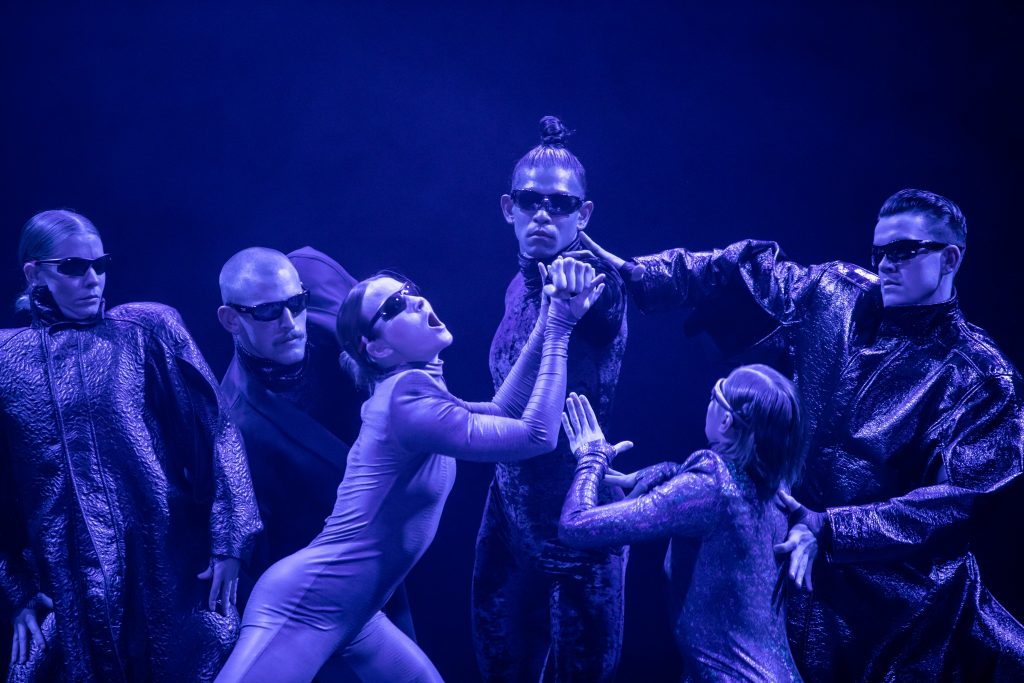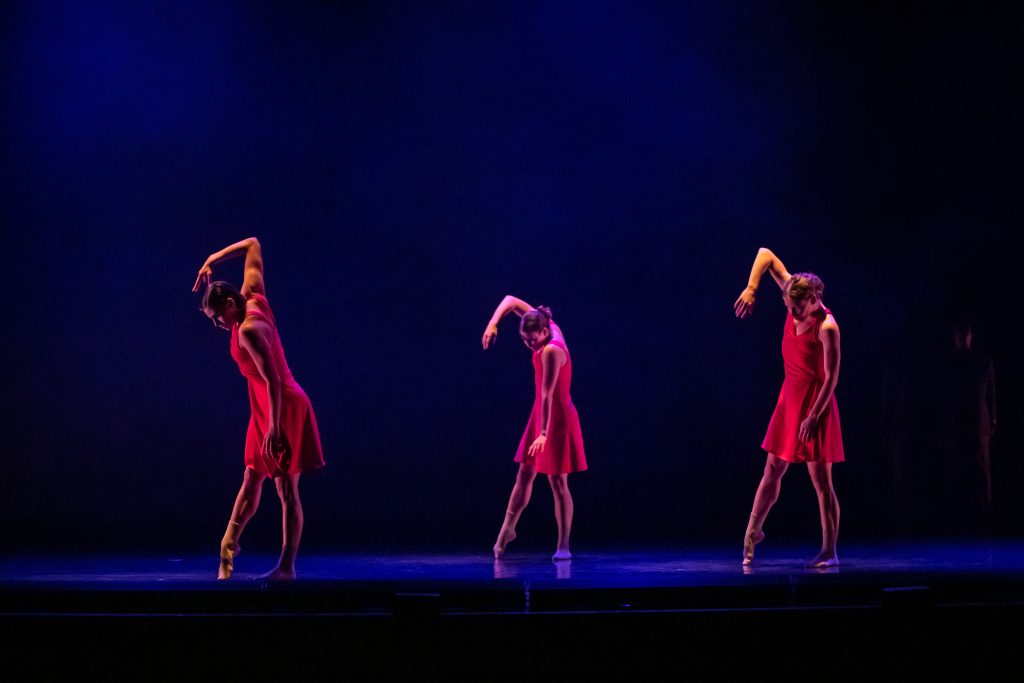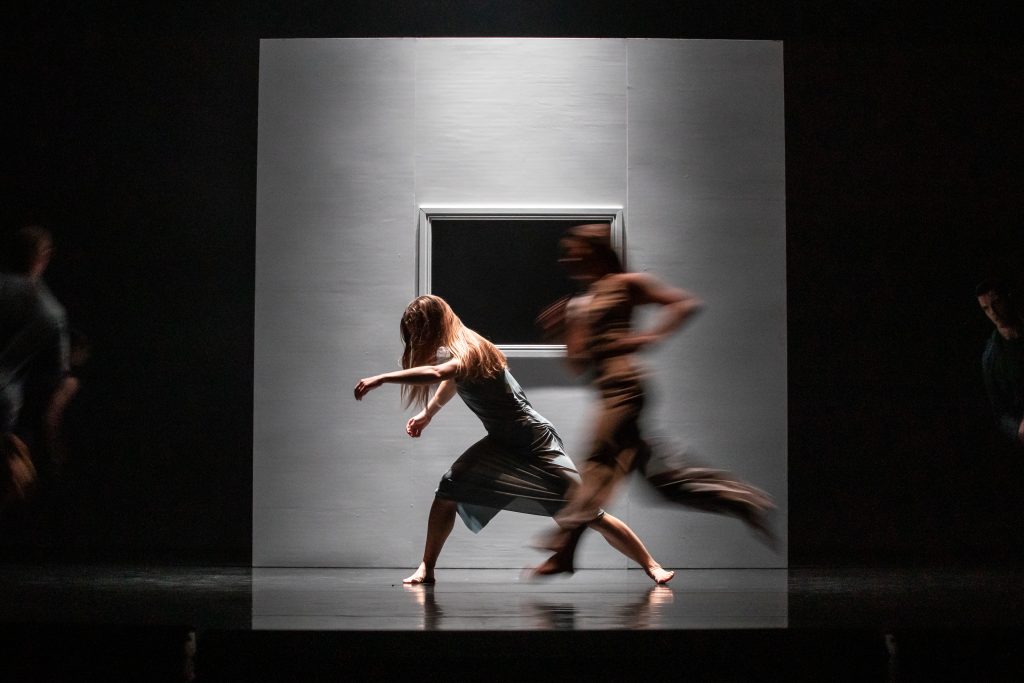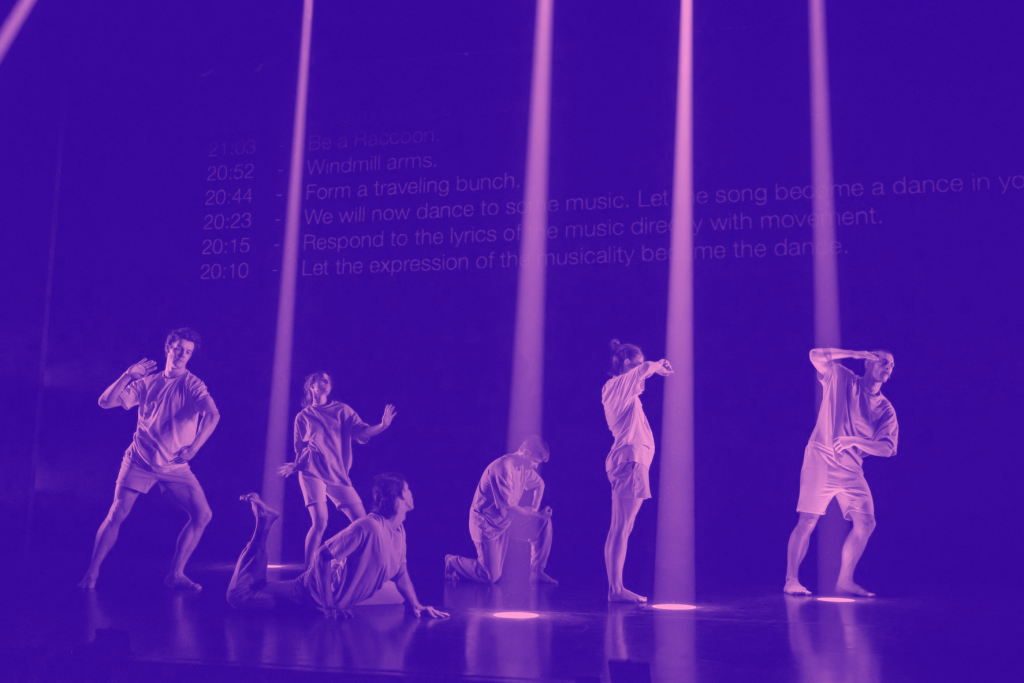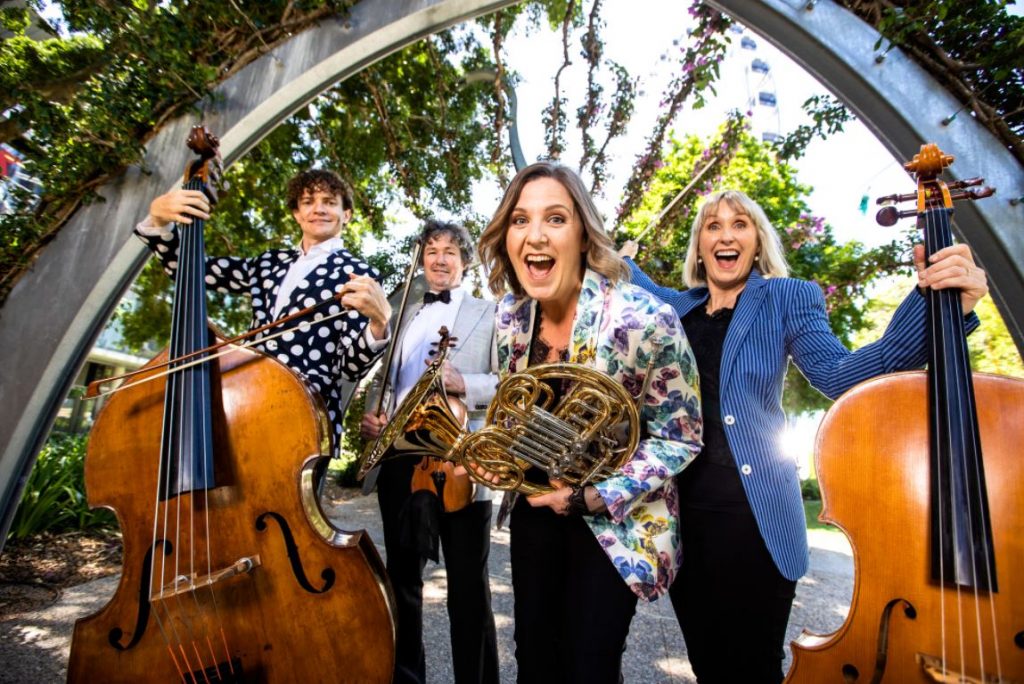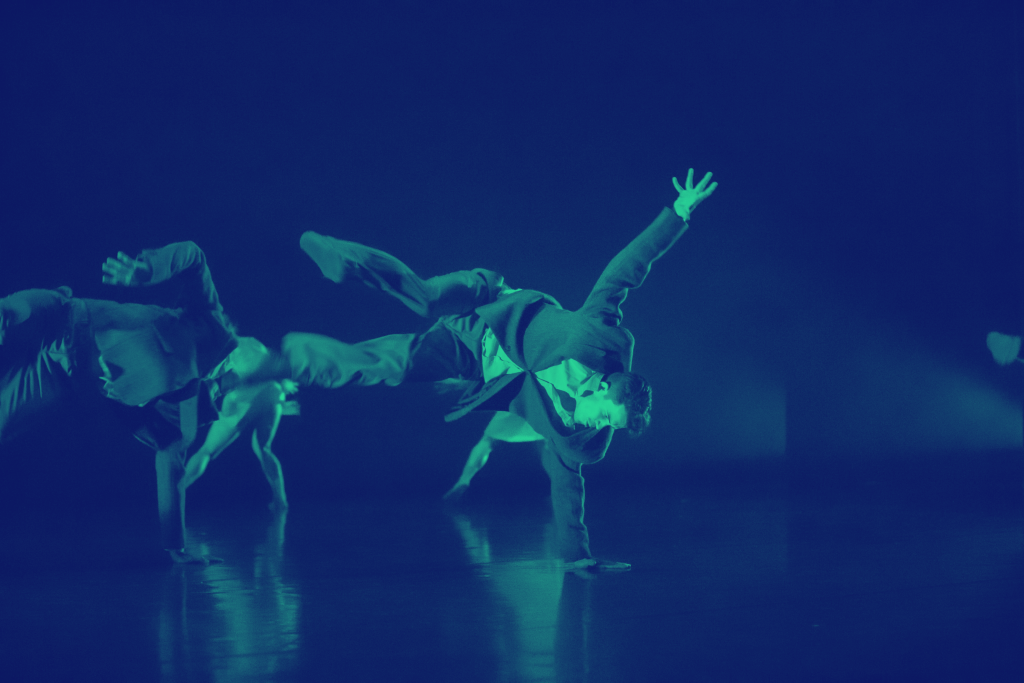
‘Three’ // Australasian Dance Collective
‘Three’ was striking.
The Queensland Performing Arts Centre (QPAC) Playhouse was abuzz for ‘Three’ contemporary dance world premieres on Wednesday night.
The sheer strength and endurance of Australasian Dance Collective (ADC)’s six dancers (Chase Clegg-Robinson, Jack Lister, Jag Popham, Josephine Weise, Lonii Garnons-Williams, Tyrel Dulvarie) was once again on display throughout the trio of 30-minute performances: ‘Alterum’, ‘Still Life’ and ‘Cult’.
First on the bill was Melbourne-based choreographer Melanie Lane’s ‘Alterum’, which translates from Latin as “the other”. With backing track from UK-based musical collaborator Clark, Lane said she drew on Greek mythology to explore “mythologies of the supernatural body” that are “seen in history through mythological hybrid creatures or in today’s hyper-real superheroes of science fiction and pop culture”.
“I see more and more, in fashion, these silhouettes that start to transform the natural shape of the human body,” Lane said.
Indeed, costume design (by Alana Sargent in collaboration with Lane) and costume realisation (by Gayle MacGregor, Sharon Clarke and Frances Pyper) stood out in its ability to show this transformation. Each dancer wore a high-neck, full-length textured bodysuit complete with pointed shoulder pads; trench coats added variations in their silhouettes, and sunglasses rounded out the futuristic, Avengers-esque aesthetic. The effect was almost reptilian with a robotic element; think of a malfunctioning Iron Man.
From the moment the soloist opened the piece, crawling and writhing in silence across the smoky stage, there was a sense the audience was seeing humans as animals enhanced by technology. Lighting design by Glenn Hughes bounced between red and blue; it was most effective when the red glow suddenly lit up the group of five who’d been positioned behind the first soloist. The strobe effects during the section of choreography performed in unison was also a highlight, as well as the slow motion sequence, in which the dancers controlled each other’s motions.
Lane’s choreography provided interesting shapes and tableaus with impressive lifts among partners. There was a sense of not quite knowing where to focus attention at some points (perhaps purposely chaotic); and while the individual movements were sharp and well-executed, there is an opportunity to clean the lines and shapes throughout the portion danced in unison.
After a short interval came Brisbane native Lister’s ‘Still Life’, described as a mix of dance as impermanent and visual art as permanent.
“Time passes but memories endure,” reads the company’s website, noting Lister was inspired by the Memento Mori artwork of the 16th and 17th century, which “serves as a touchstone of our own mortality, the beauty in decay and our relationship with time”.
The stage transformed into an art gallery, with a central partition set up, light flowing through the rectangle cut from the centre of the wall (with lighting design by Glenn Hughes). Sound design by Wil Hughes also evoked the sense of place as unintelligible whispers signalled the start of the piece; the quiet intimacy of the gallery was also heard later as a pause in the beautiful piano music of Mozart, Bellini and Chopin allowed audiences to hear the collective inhale of breath from the dancers.
Lister describes the gallery as a sacred location, “a place of solitude and reflection…of clarity” and aimed to translate visual art to dance in order to capture and freeze the moment.
‘Still Life’ opened with Popham, who made his solo look effortless, despite the physical demands of innovative floorwork that saw him rolling to balance on his forehead and tip-toes and back again with impressive fluidity. Another highlight was his duet with Weise as she first moved him, then moved with him atop his body.
Lister’s choreography shone in moments like these for their creativity and sense of intimacy; he and the ADC troupe were rewarded with loud cheers and applause from the audience, presumably proud of Lister as a home-grown rising star.
‘Three’ ended with ‘Cult’, a presentation in association with London-based Hofesh Schechter’s company. ADC artistic director Amy Hollingsworth described Schechter (also credited with creating the music alongside music advisor Matthew Davidson) as “the rock star of the contemporary dance world”, and the pace and energy on stage picked up accordingly.
Stager Phil Hulford described ‘Cult’ as exploring how people are sucked into different mindsets in society and why we follow the crowd.
Formal brown suits on the male dancers and red dresses for the women gave the piece an old-timey feel; purple lighting (with design by Chahine Yavroyan) was complemented by fog, adding to the sense that the audience was seeing something that happened in the past.
‘Cult’ featured additional audio/visual elements of text projections on the backdrop and a man’s voice talking over the fast-paced music. Less individualistic movement was on display in ‘Cult’, along with creative takes on traditional steps, including stylised pirouettes and beautifully executed jumps. The use of space and overall choreography seemed more comprehensive, with longer sequences performed in unison.
The works that made up ‘Three’ were distinct in style but made for a very striking trio with their imaginative choreography, costuming, lighting and use of sound. Keep your eyes peeled for the next performance by the talented ADC creatives.
‘Three’ performs until Saturday, 29 May 2021 at QPAC’s Playhouse Theatre. For more information visit Australasian Dance Collective’s website.
Photos by David Kelly.




